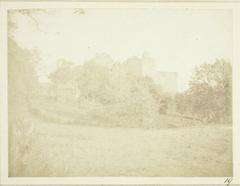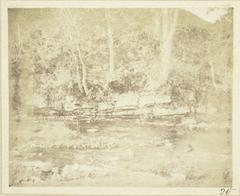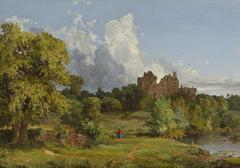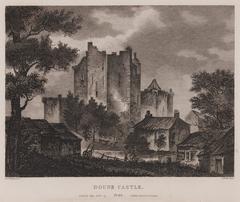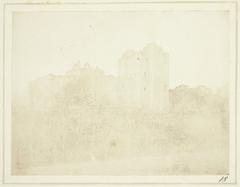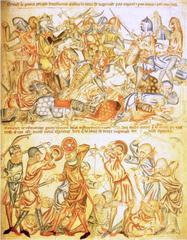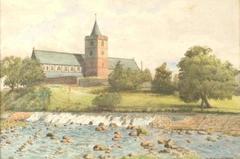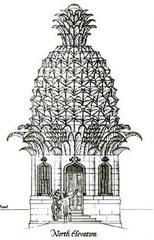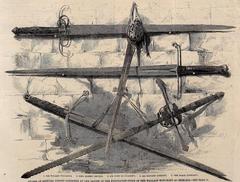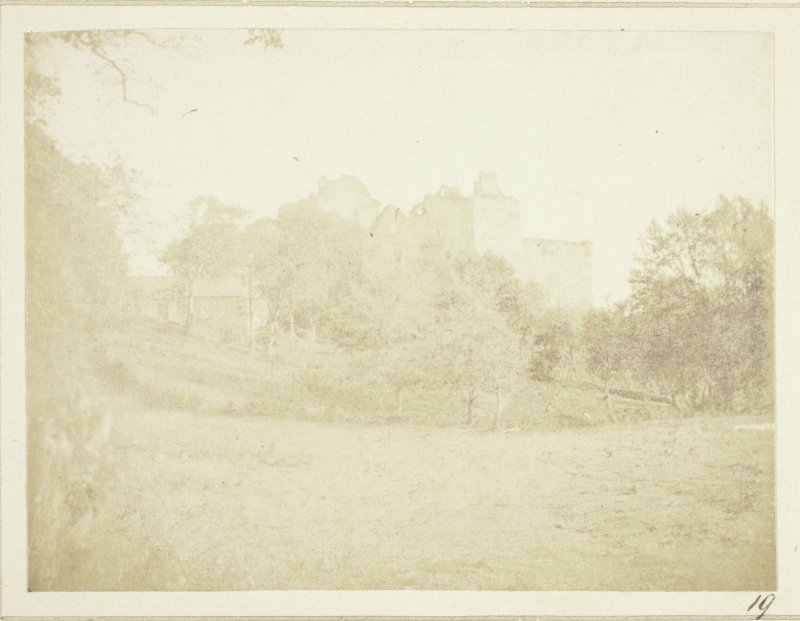
Doune Castle Visiting Hours, Tickets, and Travel Tips
Publication Date: 23/07/2024
Introduction to Doune Castle
Nestled in the scenic Stirling region of Scotland, Doune Castle stands as one of the most well-preserved examples of medieval Scottish architecture. Constructed in the late 14th century by Robert Stewart, Duke of Albany, this historic stronghold has played a pivotal role in Scotland’s history (Historic Environment Scotland). With its strategic location near the River Teith, Doune Castle served as both a military base and a royal residence for notable figures such as Mary, Queen of Scots, and James VI.
In modern times, Doune Castle has garnered cultural significance through its appearances in popular films and TV series such as “Monty Python and the Holy Grail,” “Outlander,” and “Game of Thrones,” attracting an international audience (Historic Environment Scotland). Managed by Historic Environment Scotland, the castle offers a range of visitor experiences, from guided tours and audio guides to special events and educational programs. This guide provides comprehensive information on visiting Doune Castle, including practical tips, nearby attractions, accessibility, and more to ensure a memorable visit.
Table of Contents
- Early Origins and Construction
- Architectural Design
- Role in Scottish History
- Decline and Restoration
- Cultural Significance
- Doune Castle Visitor Tips
- Accessibility
- Nearby Attractions
- Frequently Asked Questions (FAQ)
- Preservation and Conservation Efforts
- Educational and Interpretive Programs
- Community Engagement and Cultural Impact
- Special Events and Photographic Spots
Early Origins and Construction
Doune Castle, located near the village of Doune in Stirling, Scotland, is a medieval stronghold with a rich history dating back to the late 14th century. The castle was constructed by Robert Stewart, Duke of Albany, who was the son of King Robert II of Scotland. Robert Stewart, also known as the “uncrowned king” due to his significant influence and power, began the construction of Doune Castle around 1381. The castle’s strategic location near the River Teith made it an important military and administrative center.
Architectural Design
The architectural design of Doune Castle is a testament to the grandeur and ambition of its builder. The castle features a large central courtyard surrounded by high curtain walls and a massive gatehouse. The gatehouse, which served as the main entrance, is particularly notable for its impressive height and defensive features, including a portcullis and murder holes. The Great Hall, located within the gatehouse, is one of the most well-preserved medieval halls in Scotland, showcasing a magnificent timber roof and large stone fireplace.
Role in Scottish History
Doune Castle played a significant role in Scottish history, particularly during the Wars of Scottish Independence. The castle was a stronghold for the Stewart family, who were staunch supporters of Scottish independence. During the 15th century, the castle was used as a royal residence by Mary, Queen of Scots, and later by her son, James VI. The castle’s strategic location made it a key site during various conflicts, including the Jacobite uprisings of the 17th and 18th centuries.
Decline and Restoration
By the late 17th century, Doune Castle had fallen into disrepair and was largely abandoned. However, the castle’s historical significance and architectural beauty did not go unnoticed. In the 19th century, the castle was partially restored by the Earl of Moray, who undertook efforts to preserve its structure and historical features. Further restoration work was carried out in the 20th century by the Ministry of Works, ensuring that Doune Castle remained a well-preserved example of medieval Scottish architecture.
Cultural Significance
Doune Castle has gained cultural significance in modern times due to its use as a filming location for various movies and television series. The castle’s distinctive appearance and well-preserved state have made it a popular choice for filmmakers. Notably, Doune Castle was used as a filming location for the 1975 comedy film “Monty Python and the Holy Grail,” where it stood in for multiple locations. More recently, the castle was featured in the popular television series “Outlander” as Castle Leoch, the seat of Clan MacKenzie. The castle’s appearance in these productions has increased its popularity as a tourist destination.
Doune Castle Visitor Tips
Tickets and Opening Hours
Visitors planning to explore Doune Castle should be aware of the ticket prices and visiting hours. It is advisable to check the Historic Environment Scotland website for current opening hours and any potential closures. Ticket prices are reasonably set, with discounts available for children, seniors, and groups. Be sure to book your tickets in advance, especially during peak tourist seasons.
Ticket prices:
- Adults: £9.00
- Children (5-15 years): £5.40
- Concessions (seniors and students): £7.20
- Family (2 adults and up to 3 children): £25.20
Travel Advice
For those planning to visit Doune Castle, there are several tips to ensure a memorable experience. Visitors should wear comfortable footwear, as the castle’s stone floors and staircases can be uneven. Additionally, the castle’s location near the River Teith offers beautiful views and opportunities for scenic walks. The castle is easily accessible by car, with parking available on-site. Public transportation options include buses from Stirling, which take approximately 30 minutes. For those traveling by train, the nearest station is Stirling, from where you can take a bus or taxi to the castle.
Accessibility
Doune Castle is committed to providing access to all visitors, including those with mobility issues. While some areas of the castle may be challenging to access due to its medieval architecture, efforts have been made to accommodate visitors with disabilities. The Historic Environment Scotland website provides detailed information on accessibility, including the availability of ramps and accessible restrooms.
Nearby Attractions
In addition to exploring Doune Castle, visitors can enjoy several nearby attractions. The village of Doune offers charming shops and cafes, while the nearby city of Stirling boasts a wealth of historical sites, including Stirling Castle and the Wallace Monument. The surrounding countryside provides opportunities for outdoor activities such as hiking and cycling, making Doune Castle an ideal destination for history enthusiasts and nature lovers alike.
Preservation and Conservation Efforts
The cultural significance of Doune Castle has necessitated extensive preservation and conservation efforts. Managed by Historic Environment Scotland, the castle has undergone various restoration projects to maintain its structural integrity and historical authenticity. These efforts ensure that the castle remains a valuable educational resource and a tangible link to Scotland’s past.
Educational and Interpretive Programs
Doune Castle offers a range of educational and interpretive programs designed to enhance visitors’ understanding of its historical and cultural significance. Guided tours, often led by knowledgeable historians, provide in-depth insights into the castle’s history, architecture, and role in Scottish heritage. Interactive exhibits and multimedia presentations further enrich the visitor experience.
Community Engagement and Cultural Impact
Doune Castle plays a vital role in the local community, serving as a cultural hub and a source of local pride. The castle’s presence has a significant impact on the local economy, attracting tourists from around the world and providing employment opportunities for residents. Local businesses, including hotels, restaurants, and shops, benefit from the influx of visitors, contributing to the economic vitality of the region.
Special Events and Photographic Spots
Doune Castle often hosts special events, such as medieval reenactments, historical talks, and seasonal celebrations. These events provide a unique opportunity to experience the castle in a different light. Be sure to check the Historic Environment Scotland events page for upcoming events during your visit. For photography enthusiasts, some of the best spots include the castle’s courtyard, the views from the battlements, and the surrounding woodland area.
Frequently Asked Questions (FAQ)
What are the visiting hours for Doune Castle?
- Visiting hours can vary, so it is best to check the latest information on the Historic Environment Scotland website.
How much are tickets for Doune Castle?
- Ticket prices are £9.00 for adults, £5.40 for children, £7.20 for concessions, and £25.20 for a family ticket. For the most current pricing, visit the ticket information page.
Is Doune Castle accessible for visitors with disabilities?
- Efforts have been made to accommodate visitors with disabilities, although some areas may be challenging to access. Detailed accessibility information is available on the Historic Environment Scotland website.
What are some nearby attractions?
- Nearby attractions include Stirling Castle, the Wallace Monument, and the town of Doune.
Conclusion
Doune Castle’s rich history, architectural beauty, and cultural significance make it a must-visit destination for anyone interested in Scotland’s medieval past. Whether exploring its well-preserved rooms, learning about its role in Scottish history, or enjoying its scenic surroundings, visitors to Doune Castle are sure to have a memorable experience. Efforts by Historic Environment Scotland to preserve and promote Doune Castle ensure that it remains an invaluable educational resource and a symbol of Scottish heritage. Whether you are a history buff, a cultural enthusiast, or a fan of its cinematic appearances, Doune Castle offers a unique and enriching experience.
References and Further Reading
- Doune Castle - History, Visiting Hours, Tickets, and Tips for Exploring Stirling’s Medieval Gem, 2023, Historic Environment Scotland source
- Exploring Doune Castle - History, Visiting Hours, and More, 2023, Historic Environment Scotland source
- Complete Guide to Visiting Doune Castle - Hours, Tickets, and Nearby Attractions, 2023, Historic Environment Scotland source
